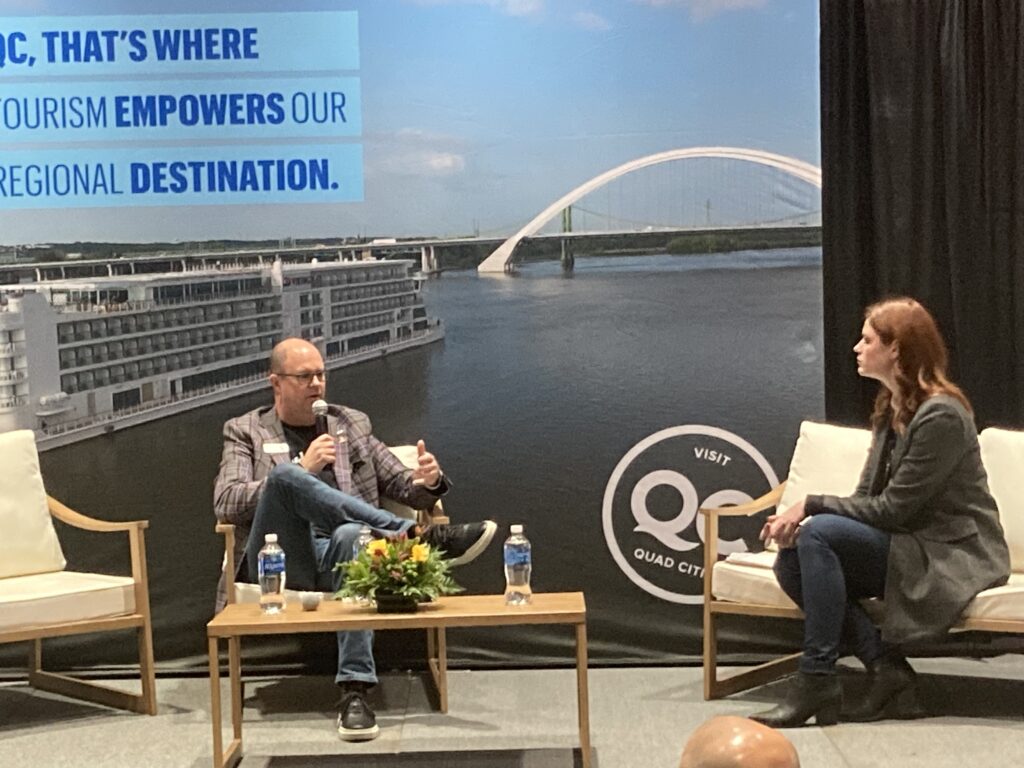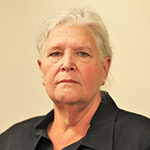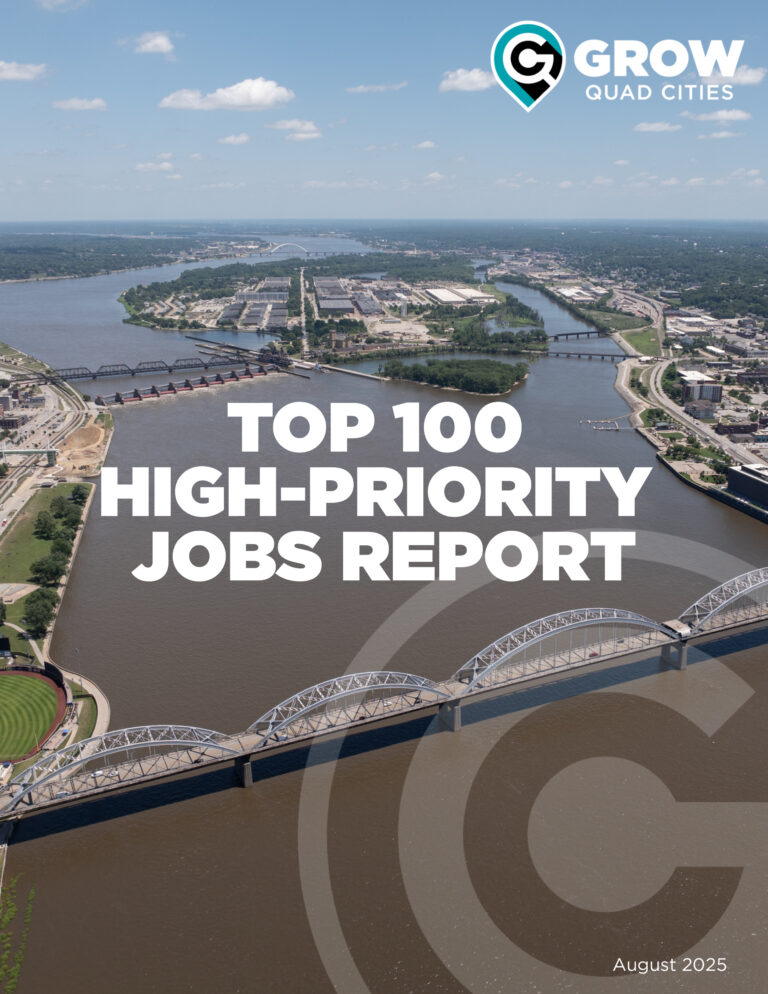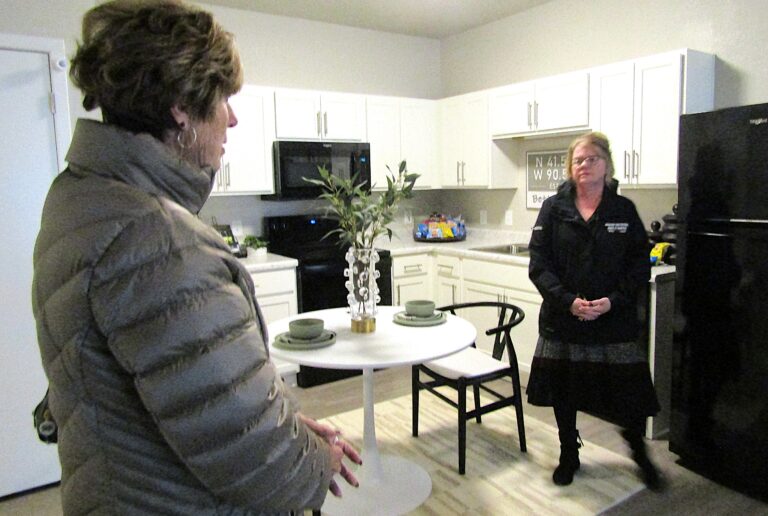
Dave Herrell, Visit Quad Cities president and CEO, talks at last month's Visit Quad Cities annual meeting about the region's strength and the need for continued collaboration as a ribbon-cutting photo of the new Interstate 74 bridge is displayed. CREDIT VISIT QUAD CITIES
Not only was Quad Cities visitor spending in 2021 at nearly pre-pandemic strength, Visit Quad Cities President and CEO Dave Herrell said there are signs that with the community’s support post-pandemic growth will continue.
According to 2021 data Visit Quad Cities released on Wednesday, Dec. 14, the bistate region saw growth in tourism’s total value – as it reached $1.14 billion and supported 8,618 jobs, which…

Want to Read More?
Get immediate, unlimited access to all subscriber content and much more.
Learn more in our subscriber FAQ.
Do you want to read and share this article without a paywall?







